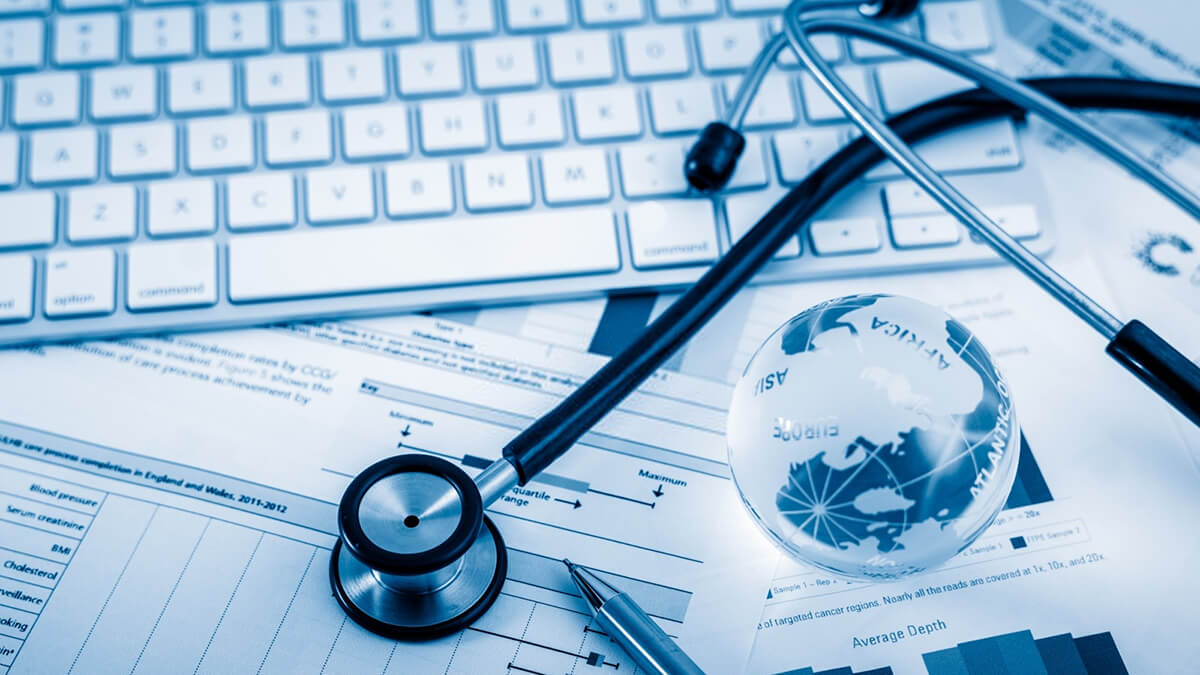The Future of Medical Administration: Trends and Technologies to Enjoy
The Future of Medical Administration: Trends and Technologies to Enjoy
Blog Article
Ideal Practices in Medical Management for Improving Effectiveness and Lowering Costs
In the ever-evolving landscape of medical care, the search of ideal methods in clinical management is extremely important for improving efficiency and suppressing costs. By integrating sophisticated technologies such as electronic wellness documents and telemedicine, medical care companies can improve operations and boost individual care. Nevertheless, modern technology alone is not a panacea; maximizing source appropriation and cultivating collaborative interaction amongst treatment groups are equally critical (medical administration). As companies strive to stabilize quality and cost, what techniques should be prioritized to accomplish these double objectives? The solution to these questions hold the key to a more lasting medical care system.
Leveraging Advanced Technology
The integration of electronic options right into healthcare systems has changed the means facilities run, improving procedures and improving person treatment. By systematizing person info, EHRs eliminate the need for difficult documentation and assist in smooth communication amongst medical care providers.
Telemedicine is another technical innovation that has actually reinvented person communication. It offers comfort for both patients and healthcare professionals by allowing remote assessments, which can minimize the need for in-person gos to and maximize appointment organizing. In addition, telehealth platforms can expand healthcare accessibility to rural or underserved areas, connecting spaces in treatment shipment.
Additionally, using Expert system (AI) and machine knowing is becoming increasingly prevalent in predictive analytics, enabling early discovery of prospective health issues and even more enlightened decision-making. These innovations, when incorporated efficiently, can boost diagnostic accuracy and customize client therapy strategies, ultimately causing enhanced health care results and operational performance.
Optimizing Source Appropriation
By purposefully handling sources such as employees, tools, and funds, medical care centers can considerably boost their functional performance, enhance patient results, and minimize unneeded expenses. The very first action in maximizing source appropriation includes performing a comprehensive evaluation of existing possessions and determining areas where resources might be underutilized or exhausted.
Prioritizing source allowance based on person demands and service demands is essential. This involves aligning resources with high-demand areas, such as emergency situation treatment or specialized therapies, to make sure timely and efficient person care. Implementing flexible staffing designs can likewise maximize labor sources by readjusting workers allowance in action to changing individual volumes. In addition, embracing telemedicine and various other technical solutions can ease physical source constraints by using alternate avenues for patient-provider communications.
Monetary sources should be meticulously kept an eye on and designated with tactical insight to sustain both short-term functional requirements and long-lasting institutional goals. This includes investing in training programs that improve team expertises and adopting energy-efficient methods that minimize functional expenses (medical administration). Eventually, a maximized resource allotment technique fosters a lasting health care atmosphere that is responsive, reliable, and financially prudent
Streamlining Workflow Processes
When healthcare facilities aim to boost operational effectiveness, simplifying operations processes ends up being a pivotal focus. Effective process lessen redundancy, remove unnecessary actions, and enhance control amongst healthcare professionals. This technique not only increases service delivery however additionally enhances the top quality of individual treatment.

Following, innovation integration plays a substantial this link role in enhancing operations. Carrying out digital wellness records (EHRs) and digital medical professional order entry (CPOE) systems minimizes documentation, lessens human error, and ensures information is easily accessible to all pertinent employees. Furthermore, leveraging telemedicine systems can simplify client examinations and follow-ups, decreasing the strain on physical framework.

Inevitably, structured operations result in set you back decreases and boosted person complete satisfaction, cultivating an extra lasting health care setting.
Enhancing Data Monitoring
Structure upon structured workflows, maximizing data administration ends up being an essential part ahead of time healthcare management. Efficient information monitoring systems are important for maintaining accurate patient documents, improving decision-making, and ensuring compliance with regulatory standards. By executing robust data monitoring remedies, health care centers can boost the top quality of individual treatment while all at once minimizing functional expenses.
One trick aspect of boosting information administration is the integration of advanced digital wellness document (EHR) systems. These systems facilitate the seamless exchange of patient information throughout various departments, decreasing replication of examinations and find out here now reducing errors. A properly designed EHR system sustains data analytics, enabling medical care carriers to determine patterns and make educated decisions pertaining to individual care.
Additionally, safeguarding patient data is extremely important. Adopting detailed cybersecurity actions, including file encryption and normal audits, makes certain the integrity and privacy of delicate details. This not just secures individuals however additionally preserves the organization's online reputation.
Buying team training is an additional essential element. Educating healthcare experts on data monitoring methods boosts their capability to successfully utilize innovation, leading to enhanced person results. To conclude, improving information administration via sophisticated technology and comprehensive training is crucial for accomplishing performance and cost reduction in clinical management.
Fostering Collaborative Interaction
An essential element beforehand medical administration is fostering collaborative interaction among healthcare experts. Reliable communication is extremely important for ensuring smooth client treatment, enhancing therapy end results, and decreasing mistakes. By urging open dialogue and coordination throughout multidisciplinary groups, medical care organizations can improve their functional effectiveness and minimize unnecessary expenses.
Central to this technique is the assimilation of communication technologies such as digital health documents (EHRs) and safe and secure messaging platforms, which facilitate the quick exchange of crucial client details. These devices make it possible for doctor to access and share information in real time, making certain that all staff member are informed and straightened in their decision-making processes. Routine team conferences and interdisciplinary rounds can better advertise a culture of cooperation and liability.
Training programs focused on boosting communication skills are likewise vital. Eventually, cultivating collective communication leads to enhanced health care distribution and price financial savings.

Final Thought
Incorporating innovative innovation, such as digital health records and telemedicine, together with maximized resource allotment and structured workflow processes, is crucial for enhancing efficiency in clinical management. Effective data management and cultivating collective interaction among healthcare groups are essential for reducing redundancies and enhancing treatment quality. By focusing on precautionary care and participating in quality improvement initiatives, medical care organizations can attain substantial expense savings and boosted patient end results, therefore making sure lasting healthcare shipment in an increasingly complicated environment.
Report this page